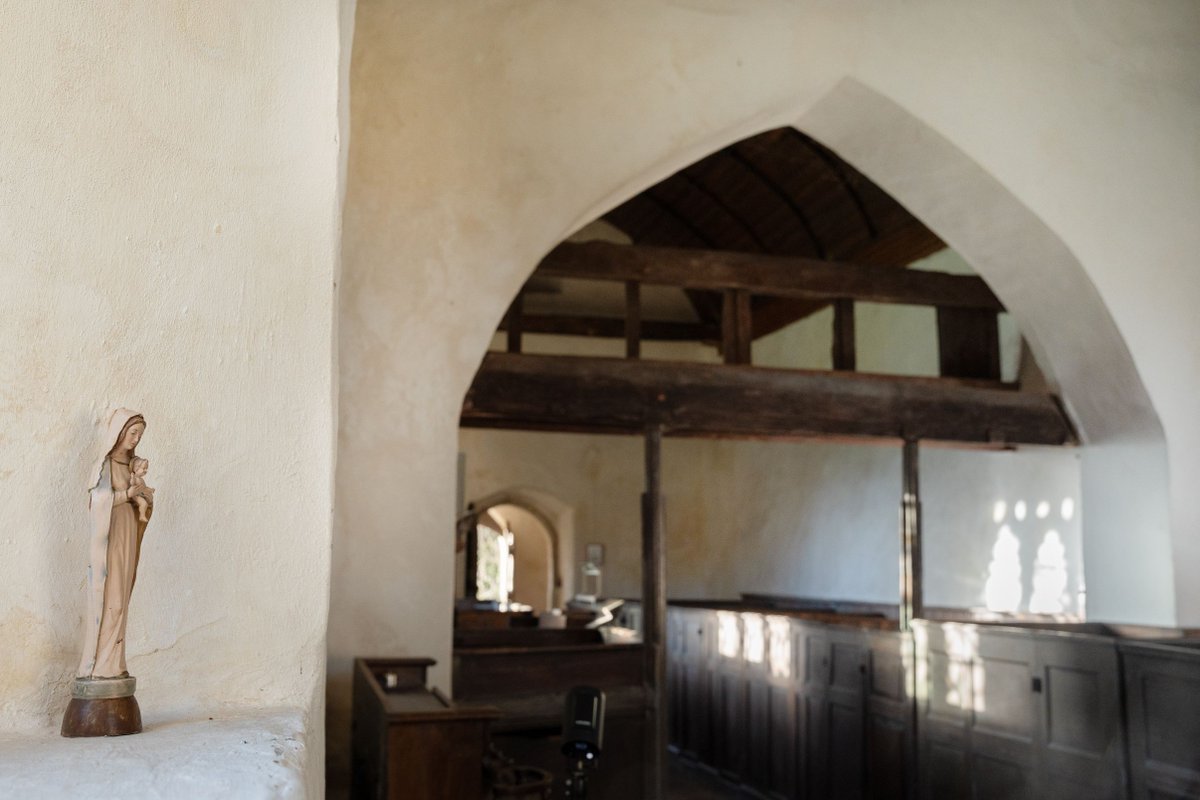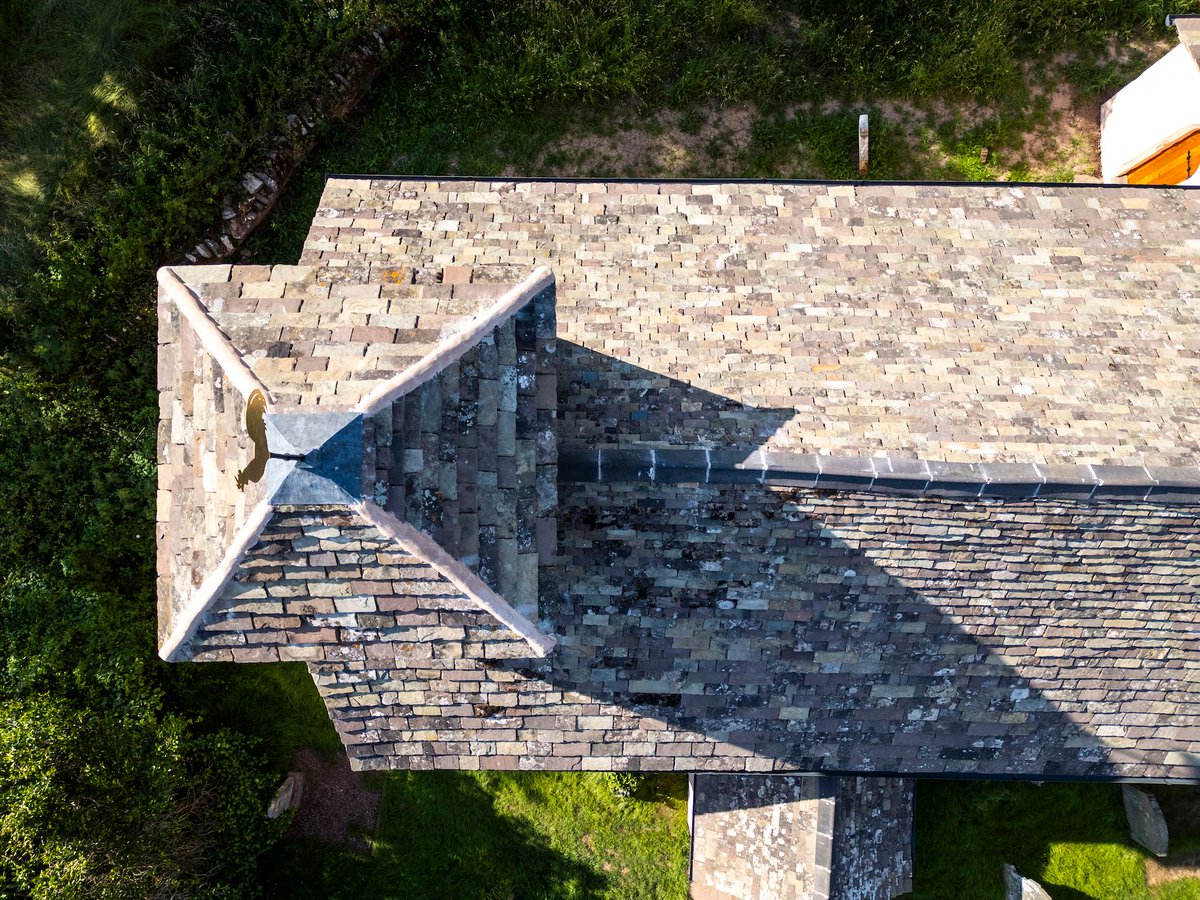When we took Tuxlith Chapel in West Sussex into our care in the 1970s, it had been derelict for decades. At the time we didn't have enough money to re-instate the lath and plaster ceiling, so we nailed some painted boards across the ceiling.
1/5
1/5

This did the trick until last year, when the boards began to fail, so we went back, and this time, thanks to a Culture Recovery Fund grant, we can restore the lath and plaster ceiling.
2/5
#HereForCulture
2/5
#HereForCulture

Here it is in an early phase of the work.
The plasterer, Ian Holloway, carefully removed all the rusting nails and damp boards, and has set out the base for his plaster: carefully spaced riven oak laths.
3/5
The plasterer, Ian Holloway, carefully removed all the rusting nails and damp boards, and has set out the base for his plaster: carefully spaced riven oak laths.
3/5

The first (of three) coat of lime plaster will be rough, and will squeeze through these laths - the plaster will then almost hang from laths.
4/5
4/5

We'll share another update soon, but we think these laths are so beautiful, it's almost a shame to cover them over, and they certainly deserve a post of their own!
5/5
5/5

Bonus tweet: a little video, if videos are your thing.
• • •
Missing some Tweet in this thread? You can try to
force a refresh






















